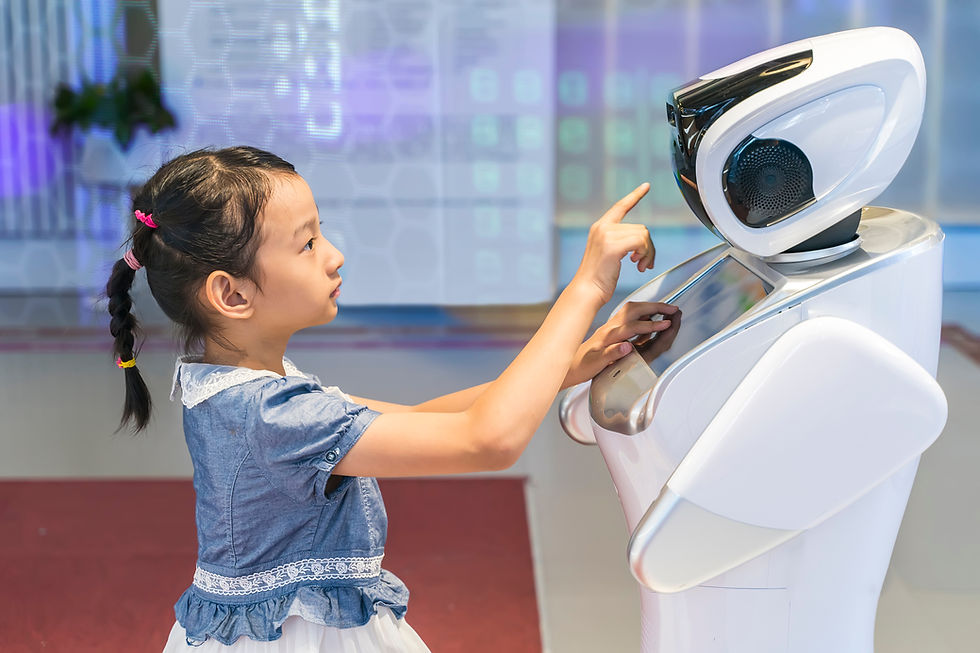Utilizing Robotics to Support the Healthcare Workforce
- Evin Tas

- Jul 29, 2024
- 3 min read
Future of Healthcare Workforce Series: Part 2
This article is the second installment in the Future of Healthcare Workforce Series. We explore how technological advances such as artificial intelligence, machine learning, and robotics may impact the healthcare workforce.

The current and projected healthcare workforce shortages pose a significant challenge for both the industry and the public. Innovative solutions are needed to address these challenges, from delivering medical supplies to supporting healthcare professionals. In this article, we’ll explore how advancements in robotics can bolster the healthcare workforce.
In 2000, the da Vinci Surgical System marked the first significant robot-human collaboration in healthcare as a pioneer of robotic-assisted surgery. While the da Vinci system might look like something out of science fiction, it is operated by a surgeon to perform minimally invasive procedures with greater precision and control. Over 10 million people worldwide have undergone surgeries with the da Vinci system, but it cannot function without the expertise of the surgeon workforce.
Robots have also revolutionized healthcare settings by performing various delivery tasks across hospitals. For example, Aethon's TUG autonomous robots transport items such as medications, food, supplies, and linens, and even remove waste. These robots integrate with building systems like elevators and doors, moving seamlessly through a facility as if they were employees. With mapping and localization capabilities, they navigate easily around a facility and in rooms, and thanks to generative AI, they learn to avoid obstacles and people. Aethon claims their robots handle the transportation of carts, allowing staff to focus on more critical tasks. The time saved on these tasks is significant: the International Federation of Robotics (IFR) reports that in a typical 200-bed hospital, nurses and other staff members walk 400 miles per week moving equipment and supplies and removing waste. Deploying autonomous mobile robots reduces this distance and time spent, lowering costs and enabling healthcare workers to prioritize direct patient care.

Another robot helping the healthcare workforce is Moxi, which has a more personable appearance and wins people over with its heart-shaped "eyes." Moxi assists nursing staff by carrying supplies, medications, and lab specimens around the facility, allowing providers more time to care for patients. Unlike Aethon's robots, which hospitals must purchase, Moxi is offered as a subscription service. Henry Ford Health System uses Moxi, and in a YouTube video they share that an unintended outcome of deploying Moxi is that patients sometimes request visits from the robot because they enjoy its presence.
Research shows that nurses spend 6 percent of their time “hunting and gathering,” searching for supplies, equipment, medication, and information. If these tasks can be delegated to a robot, it would free up valuable time for nurses to dedicate to their patients. The same research indicates that nurses want to spend more time on direct patient care, which could increase their job satisfaction and improve the quality of patient care. Similarly, in a 2022 survey of Registered Nurses, respondents overwhelmingly stated that the most important reason for staying in their current direct patient care position is "meaningful work."
Data predicts that Michigan’s healthcare workforce shortage will continue. Technological solutions utilizing robots can optimize nurses’ time, directing more time to patient care or professional development activities. Healthcare providers are overburdened with workload, and there are only so many providers to fill open positions. Whether it is surgery or delivering supplies, robots support the providers in their jobs. Utilizing technology and AI solutions to mitigate workforce shortages and optimize care helps alleviate some of the burden now.



Comments